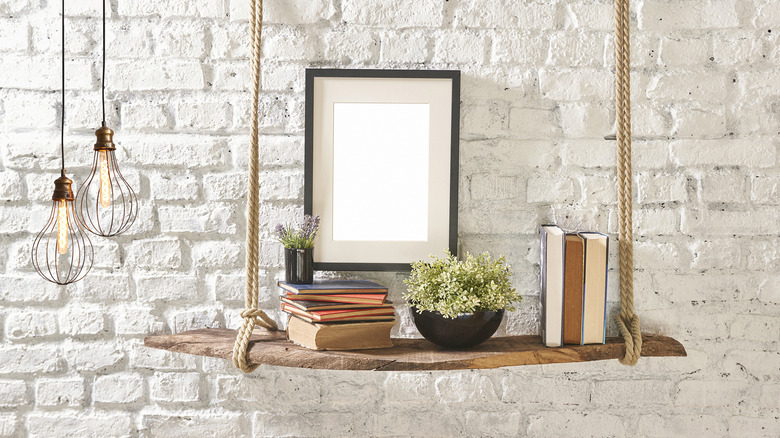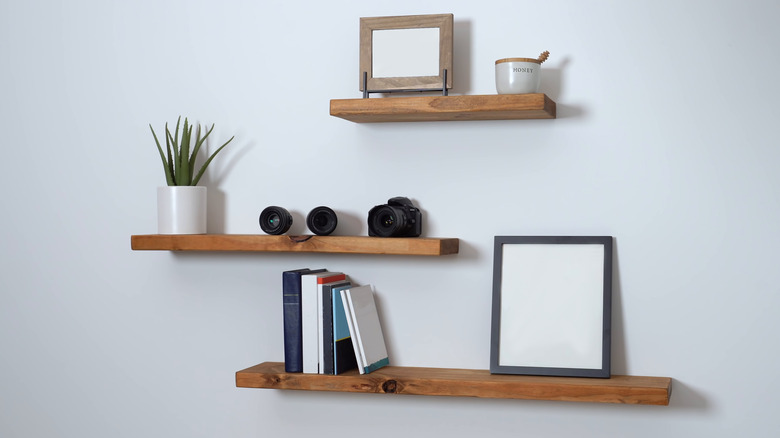Suspended Vs. Floating Shelves: What's The Difference?
If traditional shelves do not fit the aesthetics of your room, you may want to consider suspended shelves or floating shelves. Although these two types of shelves are similarly designed, there are a few differences between them that can help you determine which one will best meet your needs. Floating shelves mount to the wall using brackets that are not easily visible, while suspended shelves hang from cables or rods from the ceiling.
Floating shelves can transform your space! You might choose to use a floating shelf when you don't want cables or rods blocking light in the room as they hang from the ceiling with a suspended shelf. Also, floating shelves are more stable and can support more weight than suspended shelves. Floating shelves work well in a room when you know you have good framing inside the wall that can anchor the shelving brackets safely.
A suspended shelf may be the better choice when you have quite a bit of "wasted" space in a room with a tall ceiling. If you prefer to hang artwork on the walls, suspended shelves leave the wall open for things like large paintings. You can then use the hanging shelves to display your non-artwork items. Floating shelves occupy some wall space, limiting the size of the artwork you can hang. With a suspended shelf, you have more options for decorating your shelves because people can see both the front and back of the shelves.
How to use suspended shelves
Suspended shelves are available in a few different designs, such as shelves hanging from chains, ropes, cables, or rods. Because these types of shelves often make use of glass or metal, they can enhance the look of an industrial-themed design in a room and create a sleeker look for a room. Some people hang wine glasses from a suspended shelf in a bar area. Others may display plants, allowing them to grow in all directions. If the plant were on a shelf against a wall, the back side of the plant would have nowhere to grow.
One of the most popular reasons to use suspended shelves is to gain extra space for storing items. In a tight kitchen, for example, you may not have a lot of free wall space because of cabinets. When hanging suspended shelves from the ceiling, though, you can store items in an area that's otherwise not useful.
Suspended hanging shelves aren't as secure as a shelf hanging on a wall bracket, and they may wiggle a bit if you bump into them. However, you can increase the sturdiness of suspended shelves by using a rod to suspend the shelf rather than a rope or thin chain. To further secure the hanging shelf and to allow it to hold weight closer to that of a floating shelf, be certain to anchor it from a secure beam or piece of framing in the ceiling.
Benefits of floating shelves
Floating shelves have a great look in a modern design, as they don't have visible brackets and appear to float next to the wall. Of course, the floating shelves have support brackets, but they're hidden or minimized so people won't notice or see them. This design can help to give a small room a larger feel. Additionally, you can make use of a floating shelf in a corner of a room where cabinets or other storage items simply don't fit well.
A properly installed floating shelf will be able to support a lot of weight, just like a similarly sized shelf where the brackets are visible. Floating shelves commonly consist of wood, glass, or steel, meaning they use highly durable materials that should support the weight of many different types of items.
A floating shelf is easier to install compared to a hanging shelf. Whereas you have to hang the suspended shelf from a ceiling, which could require a tall ladder, a floating shelf attaches to the wall, which should be far more accessible for you during a DIY project. With either a floating shelf or a hanging shelf, you need to be certain you are attaching to secure framing behind the drywall. If you don't have a secure anchor for mounting a floating shelf, you could notice warping, tipping forward, or sagging of the shelf over time.


